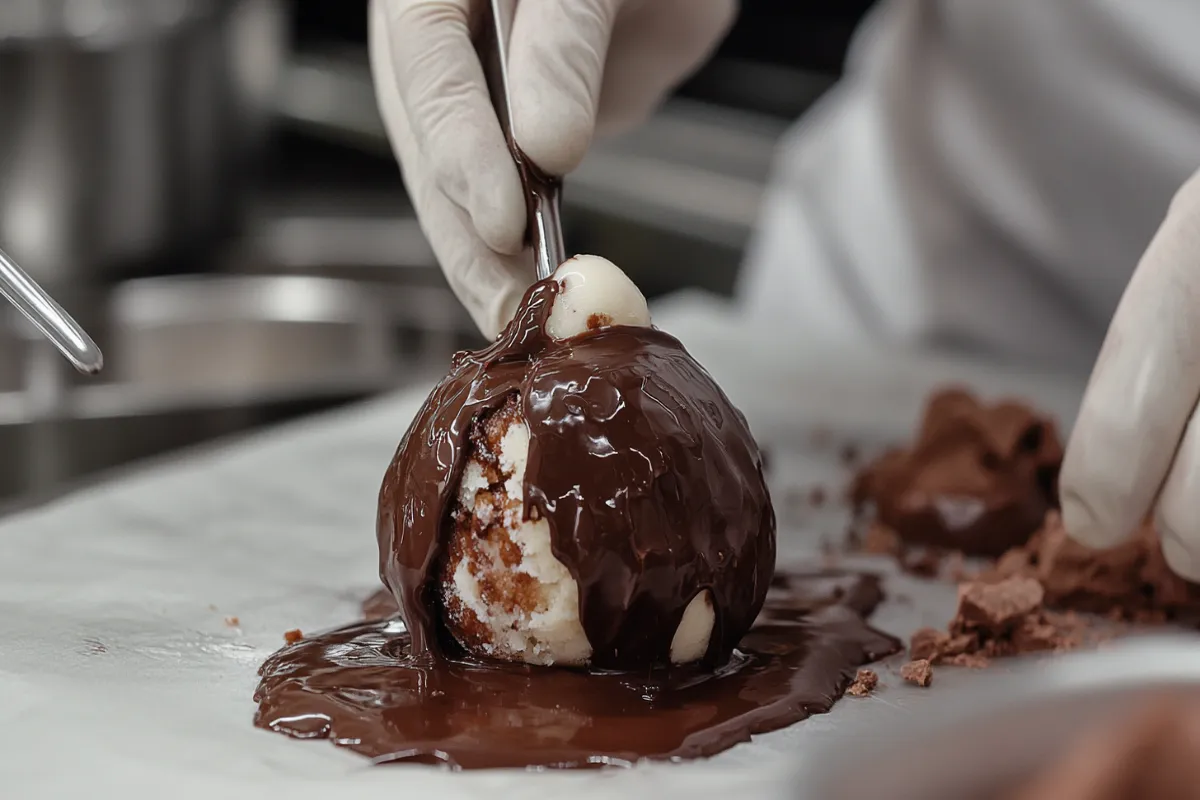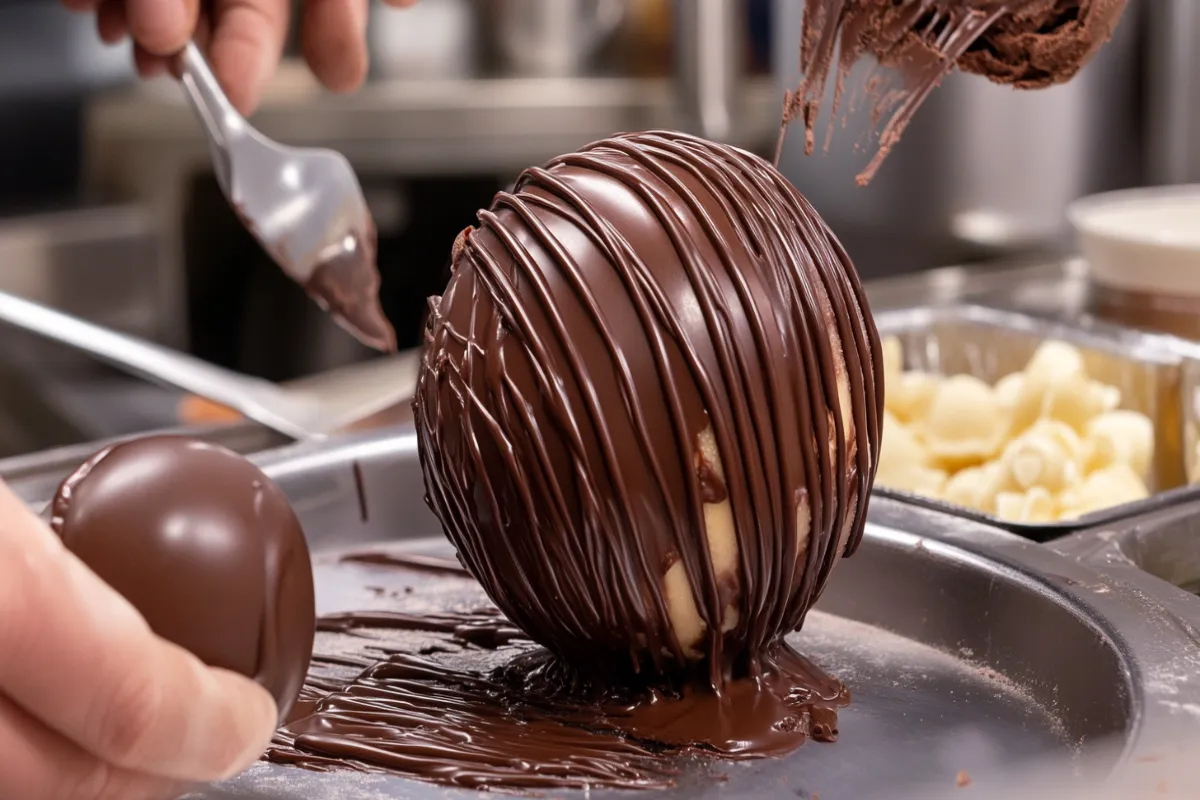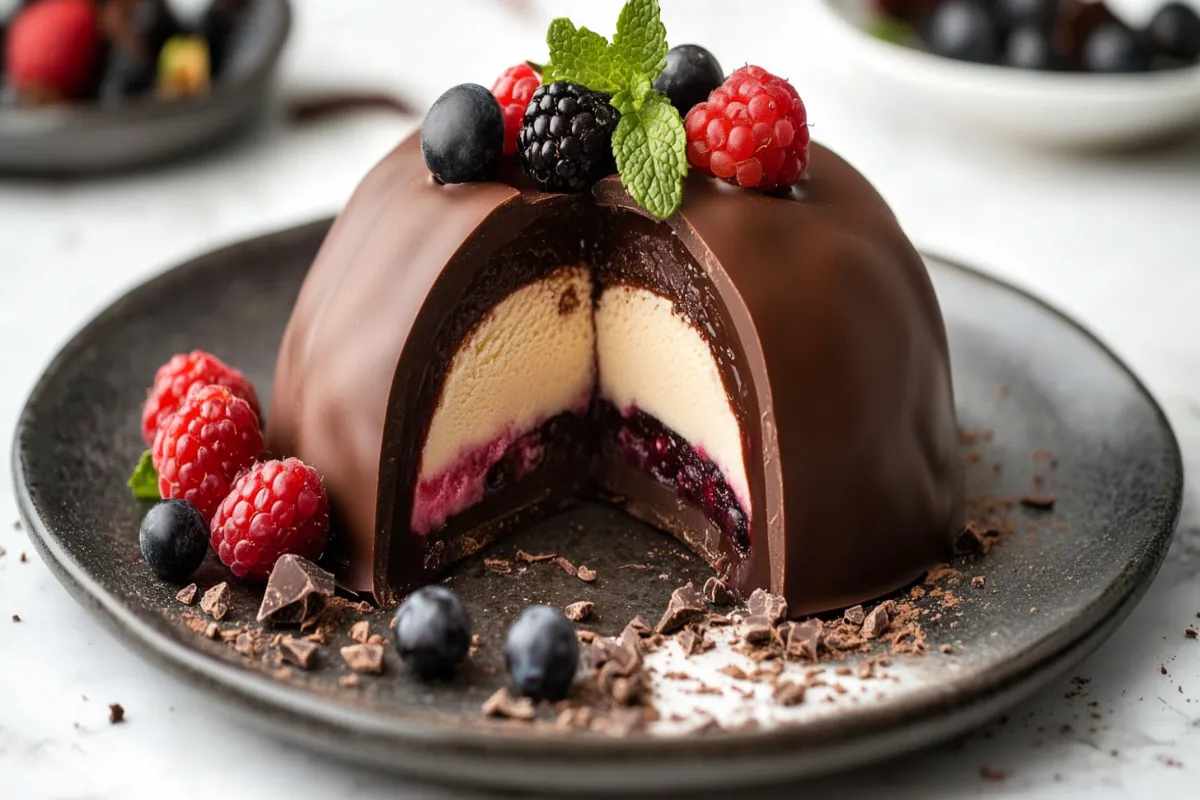Table of Contents
- Introduction: What Makes Tartufo So Special?
- The Cultural and Historical Significance of Tartufo
- The Key Ingredients of Tartufo
- High-Quality Gelato
- Luxurious Fillings
- Premium Chocolate Coating
- The Labor-Intensive Preparation Process
- The Role of Truffles in Tartufo (Not to Be Confused with Truffle Mushrooms)
- Limited Production and Availability
- Presentation and Serving Style
- Frequently Asked Questions (FAQs)
- Conclusion: Is Tartufo Worth the Price?
Introduction: What Makes Tartufo So Special?
Tartufo is a beloved Italian dessert known for its rich, complex flavors and elegant presentation. However, one might wonder why this indulgent treat often comes with a high price tag. Unlike regular ice cream or gelato, Tartufo is made with premium ingredients and requires a meticulous preparation process that sets it apart. Its layers of creamy gelato, a hidden center, and a chocolate coating elevate it to a gourmet dessert, making it a sought-after delicacy in upscale restaurants and gelaterias.
In addition to the ingredients and labor involved, the quality and sourcing of elements like gelato, fillings, and chocolate significantly impact the cost. Moreover, traditional Tartufo-making is considered an art form in regions like Calabria, where the dessert originated. This attention to detail and craftsmanship contributes to its expense.
Understanding why Tartufo is so expensive requires a look at each component, from the ingredients used to the time-consuming process of crafting it. In this article, we’ll explore the key factors that influence Tartufo’s price, including its ingredients, preparation, and the careful selection of high-quality components that define this exquisite dessert.
The Cultural and Historical Significance of Tartufo
Tartufo isn’t just a dessert; it’s a reflection of Italian culture and history. Originating from the town of Pizzo in Calabria, Italy, Tartufo was first created as a unique and luxurious dessert for special occasions. Its association with celebrations and its complex, artistic preparation process have made Tartufo an iconic part of Italian culinary tradition.
Historically, desserts like Tartufo were reserved for the elite and were often crafted with the finest ingredients to impress guests. The use of high-quality gelato, rich chocolate, and elaborate fillings in Tartufo carries on this tradition, adding to its luxurious aura. Even today, many Italians view Tartufo as a gourmet dessert that represents elegance and sophistication.
In Italy, the making of Tartufo is often considered an art form. Skilled artisans and chefs pride themselves on mastering the delicate balance of textures and flavors. The dessert’s regional connection to Calabria also means that it embodies a sense of place, much like a fine wine or cheese. This cultural significance adds to the value of Tartufo, making it not just a food item but also an experience steeped in history.
Furthermore, enjoying Tartufo is often associated with special moments—whether at a fine dining restaurant, a family gathering, or during holidays. This connection to unique experiences elevates Tartufo beyond just a simple dessert, contributing to its premium price. The blend of cultural heritage, craftsmanship, and exclusivity helps explain why Tartufo commands a higher price compared to more common frozen treats.

The Key Ingredients of Tartufo
One of the primary reasons Tartufo is more expensive than other frozen desserts is its use of premium ingredients. Each element is carefully selected to ensure the final product is both delicious and luxurious.
High-Quality Gelato
Unlike regular ice cream, Tartufo typically uses high-quality gelato as its base. Gelato is known for its dense, creamy texture and intense flavors, which come from using fresh milk, natural flavorings, and a slow churning process. The cost of sourcing artisanal gelato, which often contains little to no artificial additives, adds to Tartufo’s overall expense. Additionally, the gelato must be stored and handled with care to maintain its texture and flavor, increasing the cost of production.
Luxurious Fillings
The hidden filling inside Tartufo is another factor that drives up its cost. Traditional Tartufo often contains a maraschino cherry, chocolate ganache, or fruit preserves. These fillings are not only chosen for their taste but also for their quality. Some versions use rare and expensive fillings, such as candied fruit soaked in liqueur or high-end chocolate truffles, adding to the dessert’s premium nature.
Premium Chocolate Coating
To finish the dessert, Tartufo is encased in a chocolate shell or coated with cocoa powder. High-quality chocolate is used to create this shell, which hardens to provide a crisp texture. Premium dark chocolate, known for its rich flavor and higher cocoa content, is often preferred. The cost of using high-end chocolate, especially when combined with ingredients like nuts or cocoa powder, further increases the dessert’s price.
The Labor-Intensive Preparation Process
Beyond its ingredients, Tartufo‘s price is significantly influenced by the labor-intensive process required to make it. Crafting Tartufo is a multi-step process that demands precision and skill:
- Layering the Gelato: First, two different flavors of gelato are carefully layered, often with a filling placed at the center. This step requires manual shaping to achieve the classic round form while ensuring that the filling remains encased in the middle.
- Freezing: After forming the Tartufo, it must be frozen to set its shape. The freezing process takes time and requires careful temperature control to maintain the gelato’s creamy texture. Rushed or improper freezing can compromise the dessert’s quality.
- Coating: The Tartufo is then coated with melted chocolate or rolled in cocoa powder, nuts, or cookie crumbs. Achieving an even, smooth coating requires practice and patience. The chocolate must be of the right consistency, and the dessert must be chilled quickly afterward to set the shell.
- Final Touches: Some Tartufos are dusted with additional toppings like powdered sugar or garnished with edible gold leaf for a luxurious finish. These extra steps further increase the time and cost involved in creating the dessert.
Each of these stages is typically done by hand, especially in artisanal gelaterias that pride themselves on traditional Tartufo-making methods. The time, expertise, and precision required contribute to its high cost.

The Role of Truffles in Tartufo
While Tartufo does not contain truffle mushrooms, its name can sometimes cause confusion. In Italian, “tartufo” means “truffle,” and this dessert takes its name from its resemblance to the rare and valuable fungi. Some premium versions of Tartufo may feature ingredients infused with truffle oil or include gourmet truffles in the filling to add an extra layer of luxury, but these variations are quite rare.
The comparison to actual truffles, which are among the most expensive ingredients in the world, gives Tartufo an air of exclusivity and luxury. This association can lead to a perception of Tartufo as a high-end dessert, justifying its higher price point in gourmet restaurants and specialty shops.
Limited Production and Availability
Another factor contributing to the high cost of Tartufo is its limited production. Unlike mass-produced ice cream, Tartufo is often made in small batches by skilled artisans. Its preparation requires specialized equipment and knowledge, which are not as widespread as those for conventional frozen desserts.
Additionally, Tartufo is not always readily available in regular grocery stores. It is often found in upscale Italian restaurants, gelaterias, or specialty dessert shops that focus on high-quality, handcrafted treats. The exclusivity of these locations adds to the perceived value and price of the dessert.
Seasonality also plays a role. Many gelaterias source fresh, seasonal ingredients for their Tartufos, which can be more expensive depending on the time of year. Limited availability of specific ingredients, such as premium fruits for fillings, can drive up the cost further.
Presentation and Serving Style
The way Tartufo is presented also adds to its overall cost. This dessert is not simply scooped into a bowl or cone like gelato. Instead, it is usually served as a whole, intricate piece, often cut open to reveal its layers and hidden center. This elaborate presentation requires more care and skill, both in the preparation and the final serving.
When served in restaurants, Tartufo is often accompanied by garnishes such as fresh berries, mint leaves, or a drizzle of chocolate sauce. It might also be plated with attention to visual appeal, similar to how gourmet desserts are presented. The artistry involved in its presentation adds to the labor and, consequently, the price.

Frequently Asked Questions (FAQs)
Why does Tartufo cost more than regular ice cream?
Tartufo costs more due to its use of high-quality ingredients, such as artisanal gelato, luxury fillings, and premium chocolate. Additionally, the preparation process is labor-intensive and requires skilled artisans to create its layered structure and finish.
Does Tartufo always contain truffles?
No, Tartufo does not contain truffle mushrooms. Its name comes from its truffle-like shape. However, some premium versions may include truffle-infused ingredients or be garnished with truffle oil for an extra touch of luxury.
Can I make Tartufo at home to save money?
Yes, making Tartufo at home is possible and can reduce costs. However, sourcing quality ingredients like artisanal gelato, high-end chocolate, and fresh fillings will still add to the expense. Additionally, the process requires time and practice to achieve the desired texture and appearance.
Is Tartufo worth the price?
Many people believe Tartufo is worth the price because of its rich flavors, luxurious textures, and the skill involved in its creation. It offers a multi-layered dessert experience that is hard to replicate with simpler frozen treats.
Conclusion: Is Tartufo Worth the Price?
Tartufo is more than just a dessert; it is a culinary experience crafted with care and high-quality ingredients. The use of artisanal gelato, premium fillings, and a chocolate shell makes it a treat that stands out from regular ice cream or gelato. Moreover, the labor-intensive preparation and presentation further contribute to its expense.
While it may be priced higher than other desserts, many find that the unique flavors, textures, and the indulgent experience of eating Tartufo make it worth every penny. Whether enjoyed at a fine Italian restaurant or crafted at home with premium ingredients, Tartufo represents the artistry and dedication that go into creating a truly gourmet dessert.

